Prefixes and Compound Words
Prefixes and Compound:
In this unit, the students will understand that prefixes change the meaning of words and learn to use them in everyday language. They will be engaged in common prefixes such as un-, re-, dis-, pre-, and mis- among others.
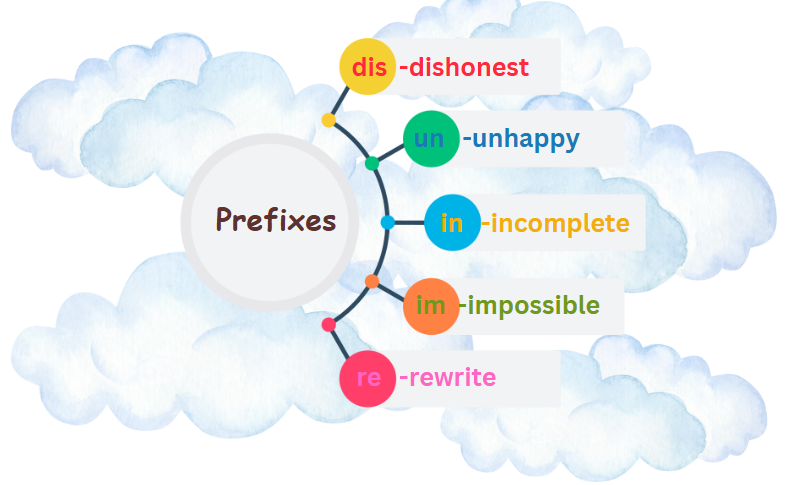
What Are Prefixes?
Definition: A prefix is a group of letters attached to the front of a word that modifies its meaning. Prefixes are what give us hints about the meaning of a word and how to interpret it.
Examples:
-
un- means "not" (for example, unhappy means "not happy," untie means "to undo the tie").
-
re- means "again" or "back" (e.g., redo means "to do again," replay means "to play again").
-
the prefix dis- means "opposite of" or "not" (e.g., dislike means "not like," disconnect means "not connected").
Activities:
Match prefixes and words: The student matches a prefix to a root word and changes the meaning to create new words.
Example: un- + happy = unhappy.
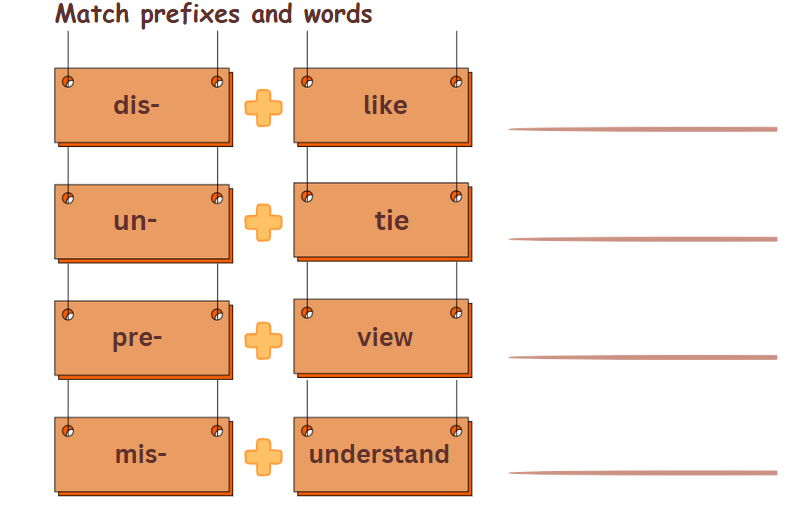
Sentence Creation: Students write simple sentences with the new words formed by prefixes.
Example: "She is unhappy because it is raining."
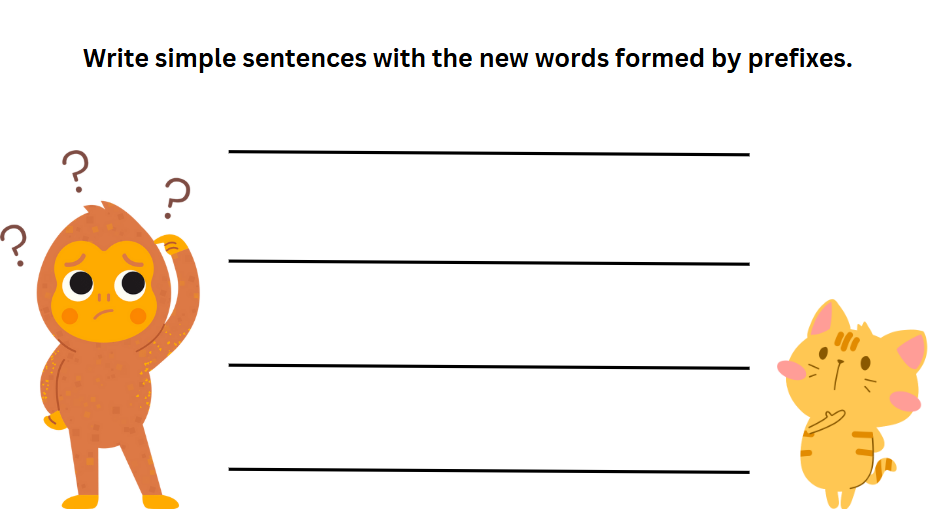
Common Prefixes - un-, re-, dis-
This week, we will work on three most frequently used prefixes: un-, re-, and dis-. Let students understand what the meanings become with the inclusion of these three prefixes attached to words.
Activity:
fill in the blank with a correct prefix on their own such as:
"He had to _______ his lunch because he was late. (re-)"→ repack.
1. She had to _______ the book because she didn’t finish reading it the first time. (re-) → __________
2. I need to _______ my keys. I can't find them anywhere! (re-) → __________
3. He felt _______ after hearing the sad news. (un-) → __________
4. The teacher asked me to _______ the classroom after the bell rang. (dis-) → __________
5. I had to _______ my clothes because I spilled juice on them. (re-) → __________
Introduction to Compound Words
Objective: This unit introduces compound words. A student learns that it is two shorter words that become one, sometimes hyphenated. A compound word will also discuss breaking a compound word into two words to explore their meaning better.
What Are Compound Words?
Definition: Compound words are terms that are formed by combining two short words to generate a new one. The meaning of compound words is often not difficult to comprehend by simply perusing the constituent parts.
Examples:
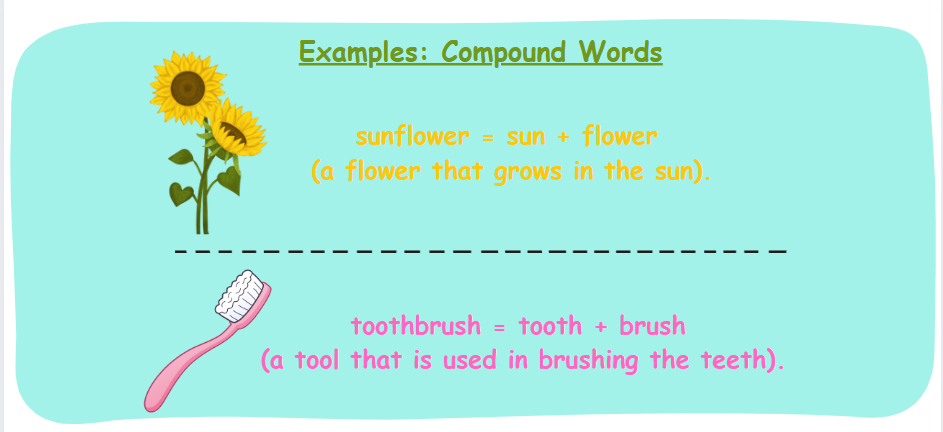
Activities
Complete the compounds words:
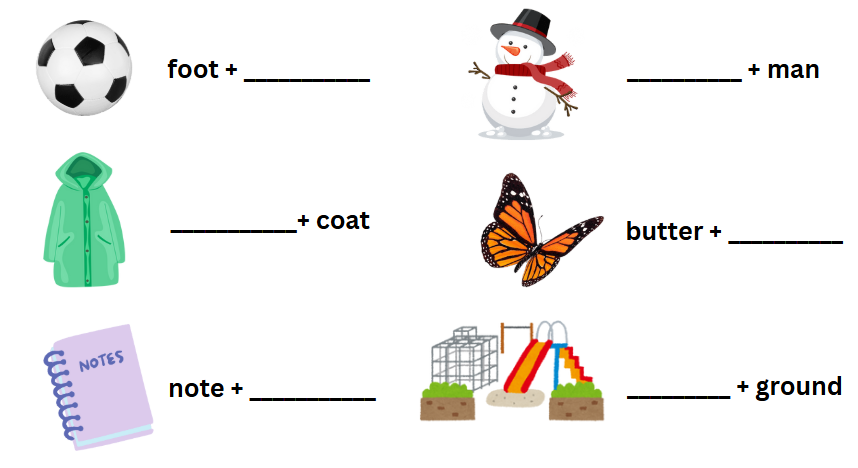
Using Prefixes and Compound Words Together
Creating New Words with Prefixes
In the third lesson, students will use common prefixes in combination with root words to come up with new words. They learn how different meanings can be conveyed through different words.
Examples:
un- + happy = unhappy
re- + do = redo
Activities
1. Word Creation: The student receives root words and combines them with a set of prefixes to form new words.
For example, if the student has the root word do, the student would make words like redo and undo.
2. Sentence writing: Students use the new words they have come up with in short, meaningful sentences.
Example: "I will redo my homework."
Fun Facts & Summary: Prefixes and Compound Words
-
Prefixes are word parts added to the beginning of a word to change its meaning—like un- in unhappy, which means “not.”
-
Compound words are formed when two words join to create a new one—like toothbrush or sunflower.
-
The longest compound word in English is said to be antidisestablishmentarianism—and yes, it starts with a prefix too!
-
Some compounds can be closed (notebook), hyphenated (mother-in-law), or open (ice cream).
-
Playing with prefixes and compounds boosts vocabulary and helps you understand how words are built.
FAQs
1. How do prefixes help us understand words?
Answer:
Prefixes give clues about the meaning of a word. If you know what a prefix means, you can often figure out the whole word.
Example: re- means "again", so replay means "play again."
2. How can I tell if a word is a compound word?
Answer:
You can tell by checking if the word is made of two real words joined together. If both parts can stand alone, it’s a compound word.
Example: toothbrush = tooth + brush
CBSE Schools In Popular Cities
- CBSE Schools in Bangalore
- CBSE Schools in Mumbai
- CBSE Schools in Pune
- CBSE Schools in Hyderabad
- CBSE Schools in Chennai
- CBSE Schools in Gurgaon
- CBSE Schools in Kolkata
- CBSE Schools in Indore
- CBSE Schools in Sonipat
- CBSE Schools in Delhi
- CBSE Schools in Rohtak
- CBSE Schools in Bhopal
- CBSE Schools in Aurangabad
- CBSE Schools in Jabalpur
- CBSE Schools in Jaipur
- CBSE Schools in Jodhpur
- CBSE Schools in Nagpur
- CBSE Schools in Ahmednagar
- CBSE School In Tumkur











